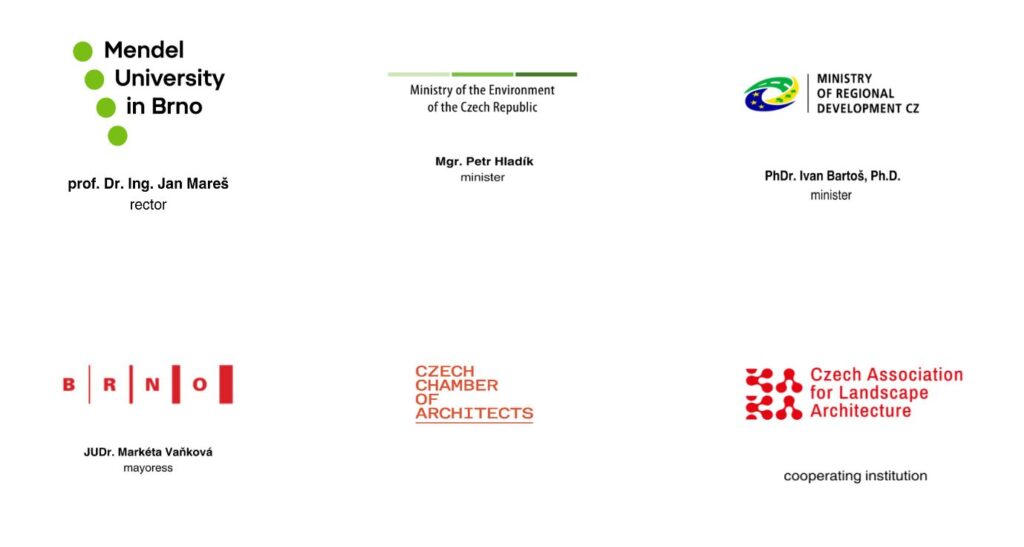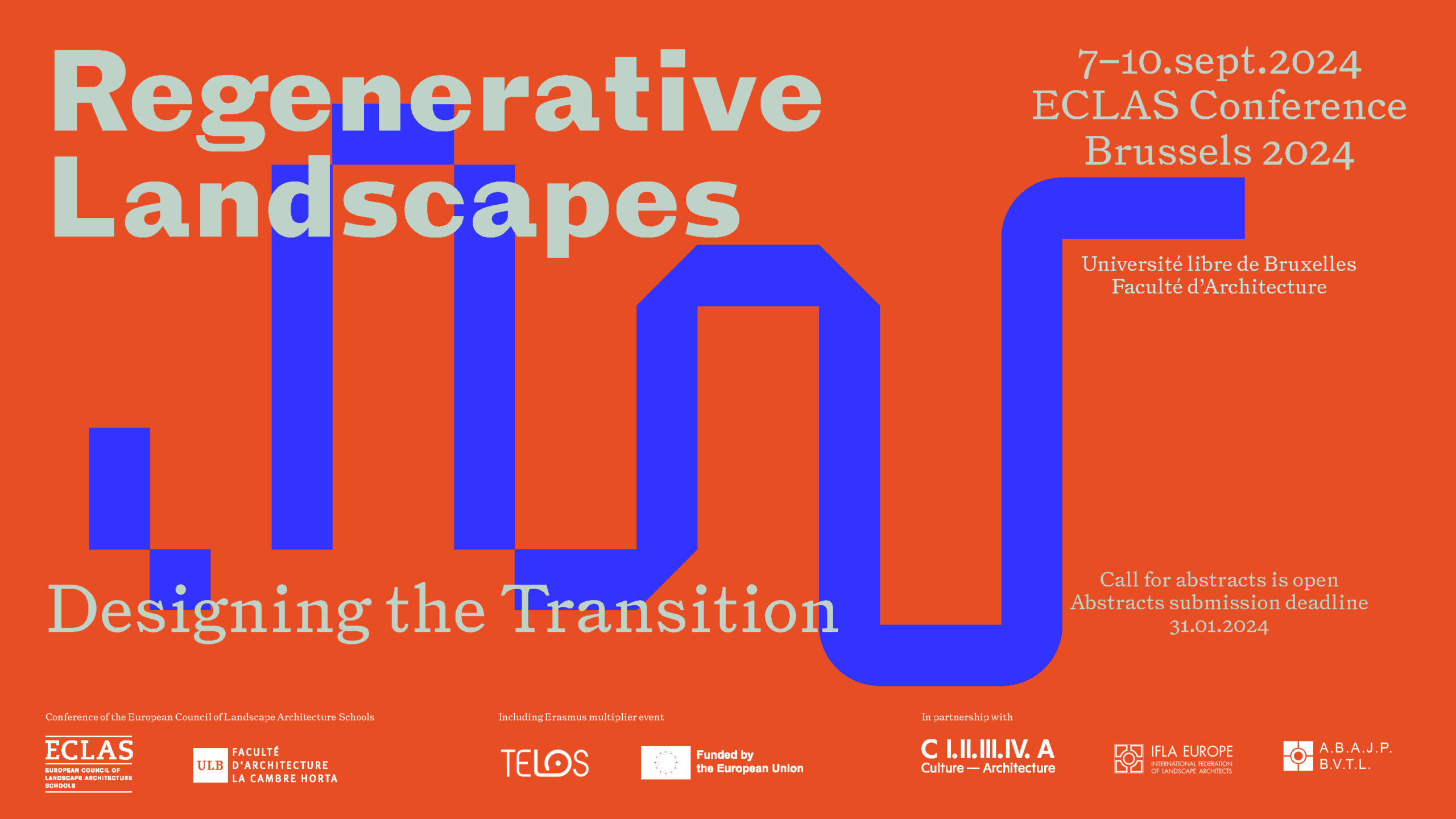Archive: ECLAS 2023 – Labyrinth of the World
- At Mendel University in Brno, Czech Republic, from 10. – 13.09.2023, with hybrid option
- Venue: Faculty of Regional Development and International Studies, Aula, třída Generála Píky 2005/7, 61300 Brno, Czech Republic.
- Download conference programme (status: 08.09.2023, final)
- Download Book of Abstracts
- Keynote Speakers
- Registration is closed now
- Download poster templates
- Conference field trips
- Accommodation recommendations or check the Brno conference app for all practical issues related to your trip
Watch nice memories of the Brno Conference 2023
Crossroads Call for Abstracts
The ECLAS 2023 conference in Brno, Czech Republic, will issue from the topics of the 2022 and 2021 ECLAS conferences. The discussion on the current global changes and their impact on landscape architecture will revolve around a multitude of layers, overlapping and intersecting and leading us to many crossroads.
Crossroads of time, space, mind, and humanity.
We feel a need to identify the main crossroads together. Those on which we have to make decisions: Which turn to take and which direction to follow in the labyrinth of the world? How to further develop our discipline? How to formulate research topics for the future. How to innovate teaching?
400 years in Comenius’ Labyrinth
This year, we commemorate the 430th anniversary of John Amos Comenius, a philosopher, writer, scientist, teacher and a visionary thinker who had reformed the world of education for the centuries to come. His book Labyrinth of the World and Paradise of the Heart was written exactly 400 years ago. The chaotic world that he had pictured in it appears to be a reality. The changes we are living now seem to be faster, more intense, more dramatic, and very complex. We solve global issues, but are we aware about the struggles at local levels? Which solutions proved to work, and which did not?
Trust in landscape architecture
At a time when we are preparing next year’s conference we feel the words imbalance, insecurity, and threats resonating very strongly within each of us. We have no idea about the turns the global happenings will take and in which direction they will evolve. But what we do know for certain is that landscape architecture is indispensable for the quality and resilience of the space we share. In collaboration with other disciplines, landscape architecture is able to offer original ideas, visionary solutions, and effective innovations. Landscape architecture integrates the aspect of time, the natural phenomena of the place, the inner world of imagination, identities of local communities as well as architecture, technologies and infrastructure. This gives hope for our landscapes. We can meaningfully connect all of the mentioned into one highly functional and sustainable whole. And there is the power of an inner and outer beauty that is accessible to all people without distinction. There are many examples of good practice and approaches – let’s share them!
At the crossroad
The conference in Brno is designed around the concept of crossroads within the labyrinth of the world. The title of each crossroad defines its content, which is only briefly indicated using some strong contradictions and keywords. All crossroads are open to your interpretation. The conference proceedings will eventually act as a survey covering some of the most important landscape architecture issues, their core aspects and examples of solutions as a result of a specific research through conference.
Our crossroad questions
- What are the critical crossroads of landscape architecture in your country?
- What are the directions and possibilities available to you?
- Which proved good, and which did not? Where are the no-gos?
- Which effective and functional steps can we offer to address the phenomena of a global crisis?
- Are we addressing these key topics in our creative work, in teaching, and in research?
Crossroads of the ECLAS Conference
We invite submissions to the five crossroad themes of the conference. Your proposal can take any of the following formats:
- Oral presentation
- Workshop
- Round table
- Poster
- Artistic intervention or installation
1 Crossroads of time
The factor of time
… continuity of landscapes x their planning and design, protection x adaptation (historic gardens, landscapes, monuments, urban zones), sustainable future of degraded land (agricultural, after disasters) x natural landscape, anticipation of global and local changes (climate, landscape, cities, society) and preparation for them (adaptation, resilience, new technologies, methods) – Green Deal, planned x spontaneous planting (succession), spaces before x after COVID-19, co-evolution, temporality x sustainability …
2 Crossroads of space
The site
… identity x uniformity (Genius of the place), shrinking cities x urban sprawl, private x public space (borders), segregation and safety, (in)visible town and landscape infrastructure, site-specific x global design, the impact of media and economy, gentrification and suburbanization, contemporary specific problems of different types of spaces (streets, squares, parks, riversides, allotment gardens, brownfields, vague terrain, …) and their solutions (examples).
3 Crossroads in mind
Thinking and feeling.
… personal freedom and individuality in designing and using space x experienced patterns, professional ethics x prevailing values of society, impatience to wait x slowness in processing, emotions x facts in decision making, global aesthetics x local art, religious manifestation in towns and landscapes, influence of art thinking on contemporary landscape architecture, landscape architecture in the real x virtual x imagination world, looking for Paradise of the Heart (acc. J. A. Comenius). Beauty …
4 People on crossroads
Society on the move.
… traditional public space x new social needs, transport infrastructure in the city and countryside x pedestrian accessibility, local people x tourists, participation process x planner (project team), contemporary pilgrimage x cultural heritage, migration of people x segregated localities, shared and caring (healing) open space x abandoned (barren), between sociology and landscape architecture. Together …
5 Crossroads in research and teaching
What and how?
What is the relationship between academic research, professional practice and teaching of landscape architecture? How should the landscape architecture school of the 21st century teach its students?
… academic teaching process x needs of professional practice, new teaching methods x traditional methods, transformative learning, contemporary x new necessary learning goals and competences, theoretical research x implementation in legislation and practice, interdisciplinary approach, local research themes, research through designing process, conference as a research project …
Crossroads in practice
Overlapping.
Special sessions without a number, invited in each core session mentioned above.
Examples of good practice, synergetic approaches that will show a new direction across the labyrinth. Original realised or planned solutions and ideas. With a commentary on how they are incorporated into the legislative.
Side Events
- ECLAS Doctoral Colloquium 2023 & Creative Workshop Schola Ludus
- Research Workshop – Across the DIGITALSCAPE
Organising Committee
Alena Salašová, Eva Žallmannová, Petr Kučera, Barbara Ševčíková, Kamil Mrva, Petr Velička, Pavel Šimek, Lukáš Štefl, Miloš Pejchal, Jozef Sedláček, Barbora Dohnalová
The ECLAS 2023 conference is financially supported by the Mendel University Brno and Statutory City of Brno.
Under the Auspieces of:

Mendel University
Czech Ministry of the Environment
Czech Ministry of the Regional Development
Statutory City Brno
Czech Chamber of Architects
Czech Association for Landscape Architecture
